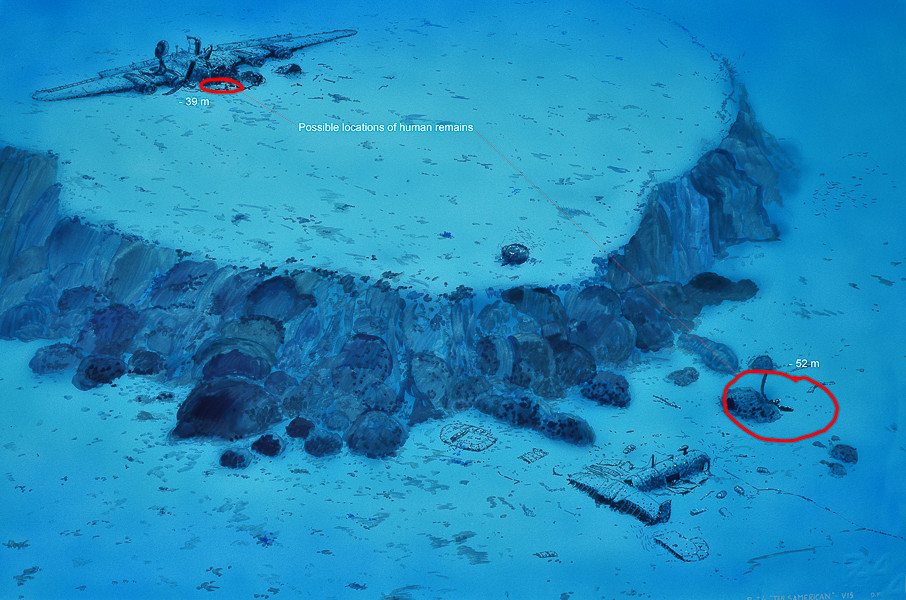
B-24 LIBERATOR - TULSAMERICAN
DEPTH: 39 - 52 m
SKILL: Advanced
Consolidated B-24 J “Tulsamerican”; heavy bomber; American, 765th BS, 461st BG, 15th AF
Crashed: 17th December 1944, mission Odertal, Germany (cause: anti-aircraft defence)
Dimensions: length=20.472 m, wingspan=33.528 m, weight=25,401 kg (maximum take-off weight)
Coordinates: 43.03328º N, 16.26539º E
Location: Island of Vis – Cape Polivalo
Access: 1/5 access is solely by boat (the location is in the open sea)
Visibility: 5/5 mostly very good visibility
Current: 3/5 mostly weak, but occasionally strong
Flora and fauna: 5/5 varied life on and around the wreck, on the wreck large specimens of fish
HISTORY:
Sometime around Christmas 2009 in the sea near the island of Vis, a diver from the island of Korčula Darko Bojanić accidentally discovered a four-engine aircraft. In March 2010, a team of divers from the Croatian Conservation Institute and their associates dived to the unknown wreck which was lying at a depth of 39 metres and established it is an American heavy bomber type B-24 Liberator. The wreck was lying on its back, the fuselage practically destroyed yet the demolished cockpit could be recognised by its control yoke which was still in situ.
At the beginning 1944 the Allied Forces had built an airfield on the island of Vis at the location of Velo Polje, so they could land damaged Allied Forces aircraft which were returning from their bombing missions in Germany, Austria, the Czech Republic, Slovakia, Croatia and other occupied countries, toward their bases in southern Italy. Thanks to the Vis airfield, several hundred heavy bombers and their crew were saved, and many of the aircraft, following repairs, flew from the island of Vis to their bases in Italy. However a significant number of damaged bombers did not succeed to reach the airfield on Vis and the crews abandoned them by jumping by parachute, whilst some of the bombers even landed in the sea. According to data gathered to date, on the seabed around the island of Vis there are about ten Liberators, however their correct locations to date are unknown.
The Tulsamerican was part of the 765th squadron 461st bomber group, belonging to the American 15th Air Force in southern Italy. On its last mission it took off from the base in Torretta on 17th December 1944. That morning the Allied Forces heavy bombers had as their target the facilities near the town Odertal, close to the Polish-German border. This aircraft was the last example made by the Douglas Factory in Tulsa in the state of Oklahoma, and was paid for with war bonds bought by the employees of the factory and the citizens. Once it was “decorated” the brand new Liberator flew half way around the globe and after several intermediate landings arrived at its destination in Italy, the airfield of Torretta.
Flying from around ten airfields in the air above southern Italy, an impressive air armada of over 500 bombers gathered with a long flight ahead to Germany. On their way to Odertal, when the formation was already over the Czech Republic, it was attacked by German Messerschmitt 109 and Focke Wulf 190 fighters, whose main aim was the defence of the territories of the German Reich. In one of the attacks, the fighters succeeded to hit and damage one of the engines of the Tulsamerican and the pilot had to shut it down. Before the bombs were finally dropped, the German fighters attacked it several more times and managed to hit the wings, the fuselage and the hydraulic system.
They flew over the Alps at a dangerously low altitude and even before they reached the Croatian coast it was clear that their only chance of rescue was to land on the island of Vis, the only airfield in free territory on the route back to their base in Italy. Within reach of the island of Vis they found that due to damage they couldn’t lower the undercarriage, and the flight controller did not give permission for them to land on their belly, as the large bomber would obstruct the landing field and prevent any further landings. Flying into the airfield’s zone on the island of Vis, the heavy bomber made a turn above the open sea south of the island, into the area assigned for abandoning aircraft or landing at sea, where the pilot ordered the mechanic to try to manually lower the undercarriage. In the middle of the second turn above the sea, and just as the aircraft was in an unfavourable position with regard to the wind, the engines suddenly stopped and so the pilot decided on the only possible manoeuvre – landing on the sea. The smash was so strong that the force of the water crushed the lower part of the fuselage and the bomb-bay door and tore off the tail. The front part of the aircraft along with the wings turned upside down, and some of the crew were catapulted into the sea. When the crushed fuselage of the aircraft disappeared under the surface after only a few minutes, only seven of the aviators were left swimming in the icy sea. Into the depths of the sea, along with the Tulsamerican, disappeared the pilot Ford, navigator Landry and mechanic Priest, who didn’t manage to escape the aircraft in time. The surviving members of the crew were saved by a British boat which was based in Rukavac, for the very purpose of rescuing aircrews which ended up in the sea.
WRECK CONDITION AND DIVING:
The newly found wreck is situated in a protected area where diving is permitted only through authorised diving centres, however the depth of 39 metres is within limits of sports diving so it is available to most diving categories.
By examining the main part of the wreck we have concluded that the remains of the aircraft should be either in front or behind the wreck, in other words in the direction of flight. From examining the wreck it was clear that the aircraft was in the landing procedure at the airfield on Vis, as the undercarriage was lowered and the flaps were down. Landing the heavily damaged bomber on the sea was very rough. From the terrible crash on the surface of the sea, the bomb-bay area flew apart and the pressure of the water pressure ripped the tail section from the aircraft. At the same time the fore section over-turned and shattered, the parts (propeller, front dome) flew apart, and the aircraft sank quickly after. Those who were in the centre of the fuselage had the only chance for survival, as the force of the crash on the sea threw them out of the aircraft. Through some incredible luck, the wreckage sank exactly where there is an underwater ridge and so it settled at the shallowest part. Only thirty metres from the place where the wreck is situated the seabed falls to a depth of 65 metres. So, if the aircraft had sunk only a little further ahead, it would probably never have been found. Some 60-70 metres ahead of the nose of the wreck we found the front dome with the machine guns, which was only a few metres from the edge of the underwater plateau. The seabed there steeply drops to a depth of 50 metres and at the foot of the ridge we found the whole tail of the aircraft, one propeller and many other parts. In its interior the Browning calibre 12.7 mm side machine guns are still visible, as well as masses of cables and a large number of oxygen tanks and other equipment.
The only living member of the crew Val Miller, in America often remembers that fateful day even today when the damaged Tulsamerican sank along with three of his comrades-in-arms, a day on which his own luck did not forsake him.
The description and illustrations are a courtesy of Danijel Frka and Jasen Mesić. Buy the whole book here: https://shop.naklada-val.hr/product_info.php?products_id=561
Crashed: 17th December 1944, mission Odertal, Germany (cause: anti-aircraft defence)
Dimensions: length=20.472 m, wingspan=33.528 m, weight=25,401 kg (maximum take-off weight)
Coordinates: 43.03328º N, 16.26539º E
Location: Island of Vis – Cape Polivalo
Access: 1/5 access is solely by boat (the location is in the open sea)
Visibility: 5/5 mostly very good visibility
Current: 3/5 mostly weak, but occasionally strong
Flora and fauna: 5/5 varied life on and around the wreck, on the wreck large specimens of fish
HISTORY:
Sometime around Christmas 2009 in the sea near the island of Vis, a diver from the island of Korčula Darko Bojanić accidentally discovered a four-engine aircraft. In March 2010, a team of divers from the Croatian Conservation Institute and their associates dived to the unknown wreck which was lying at a depth of 39 metres and established it is an American heavy bomber type B-24 Liberator. The wreck was lying on its back, the fuselage practically destroyed yet the demolished cockpit could be recognised by its control yoke which was still in situ.
At the beginning 1944 the Allied Forces had built an airfield on the island of Vis at the location of Velo Polje, so they could land damaged Allied Forces aircraft which were returning from their bombing missions in Germany, Austria, the Czech Republic, Slovakia, Croatia and other occupied countries, toward their bases in southern Italy. Thanks to the Vis airfield, several hundred heavy bombers and their crew were saved, and many of the aircraft, following repairs, flew from the island of Vis to their bases in Italy. However a significant number of damaged bombers did not succeed to reach the airfield on Vis and the crews abandoned them by jumping by parachute, whilst some of the bombers even landed in the sea. According to data gathered to date, on the seabed around the island of Vis there are about ten Liberators, however their correct locations to date are unknown.
The Tulsamerican was part of the 765th squadron 461st bomber group, belonging to the American 15th Air Force in southern Italy. On its last mission it took off from the base in Torretta on 17th December 1944. That morning the Allied Forces heavy bombers had as their target the facilities near the town Odertal, close to the Polish-German border. This aircraft was the last example made by the Douglas Factory in Tulsa in the state of Oklahoma, and was paid for with war bonds bought by the employees of the factory and the citizens. Once it was “decorated” the brand new Liberator flew half way around the globe and after several intermediate landings arrived at its destination in Italy, the airfield of Torretta.
Flying from around ten airfields in the air above southern Italy, an impressive air armada of over 500 bombers gathered with a long flight ahead to Germany. On their way to Odertal, when the formation was already over the Czech Republic, it was attacked by German Messerschmitt 109 and Focke Wulf 190 fighters, whose main aim was the defence of the territories of the German Reich. In one of the attacks, the fighters succeeded to hit and damage one of the engines of the Tulsamerican and the pilot had to shut it down. Before the bombs were finally dropped, the German fighters attacked it several more times and managed to hit the wings, the fuselage and the hydraulic system.
They flew over the Alps at a dangerously low altitude and even before they reached the Croatian coast it was clear that their only chance of rescue was to land on the island of Vis, the only airfield in free territory on the route back to their base in Italy. Within reach of the island of Vis they found that due to damage they couldn’t lower the undercarriage, and the flight controller did not give permission for them to land on their belly, as the large bomber would obstruct the landing field and prevent any further landings. Flying into the airfield’s zone on the island of Vis, the heavy bomber made a turn above the open sea south of the island, into the area assigned for abandoning aircraft or landing at sea, where the pilot ordered the mechanic to try to manually lower the undercarriage. In the middle of the second turn above the sea, and just as the aircraft was in an unfavourable position with regard to the wind, the engines suddenly stopped and so the pilot decided on the only possible manoeuvre – landing on the sea. The smash was so strong that the force of the water crushed the lower part of the fuselage and the bomb-bay door and tore off the tail. The front part of the aircraft along with the wings turned upside down, and some of the crew were catapulted into the sea. When the crushed fuselage of the aircraft disappeared under the surface after only a few minutes, only seven of the aviators were left swimming in the icy sea. Into the depths of the sea, along with the Tulsamerican, disappeared the pilot Ford, navigator Landry and mechanic Priest, who didn’t manage to escape the aircraft in time. The surviving members of the crew were saved by a British boat which was based in Rukavac, for the very purpose of rescuing aircrews which ended up in the sea.
WRECK CONDITION AND DIVING:
The newly found wreck is situated in a protected area where diving is permitted only through authorised diving centres, however the depth of 39 metres is within limits of sports diving so it is available to most diving categories.
By examining the main part of the wreck we have concluded that the remains of the aircraft should be either in front or behind the wreck, in other words in the direction of flight. From examining the wreck it was clear that the aircraft was in the landing procedure at the airfield on Vis, as the undercarriage was lowered and the flaps were down. Landing the heavily damaged bomber on the sea was very rough. From the terrible crash on the surface of the sea, the bomb-bay area flew apart and the pressure of the water pressure ripped the tail section from the aircraft. At the same time the fore section over-turned and shattered, the parts (propeller, front dome) flew apart, and the aircraft sank quickly after. Those who were in the centre of the fuselage had the only chance for survival, as the force of the crash on the sea threw them out of the aircraft. Through some incredible luck, the wreckage sank exactly where there is an underwater ridge and so it settled at the shallowest part. Only thirty metres from the place where the wreck is situated the seabed falls to a depth of 65 metres. So, if the aircraft had sunk only a little further ahead, it would probably never have been found. Some 60-70 metres ahead of the nose of the wreck we found the front dome with the machine guns, which was only a few metres from the edge of the underwater plateau. The seabed there steeply drops to a depth of 50 metres and at the foot of the ridge we found the whole tail of the aircraft, one propeller and many other parts. In its interior the Browning calibre 12.7 mm side machine guns are still visible, as well as masses of cables and a large number of oxygen tanks and other equipment.
The only living member of the crew Val Miller, in America often remembers that fateful day even today when the damaged Tulsamerican sank along with three of his comrades-in-arms, a day on which his own luck did not forsake him.
The description and illustrations are a courtesy of Danijel Frka and Jasen Mesić. Buy the whole book here: https://shop.naklada-val.hr/product_info.php?products_id=561

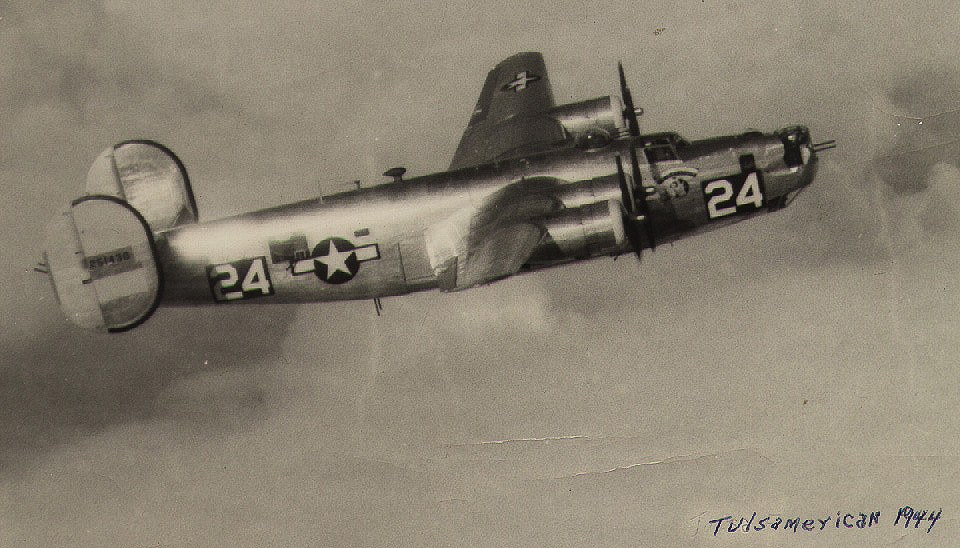
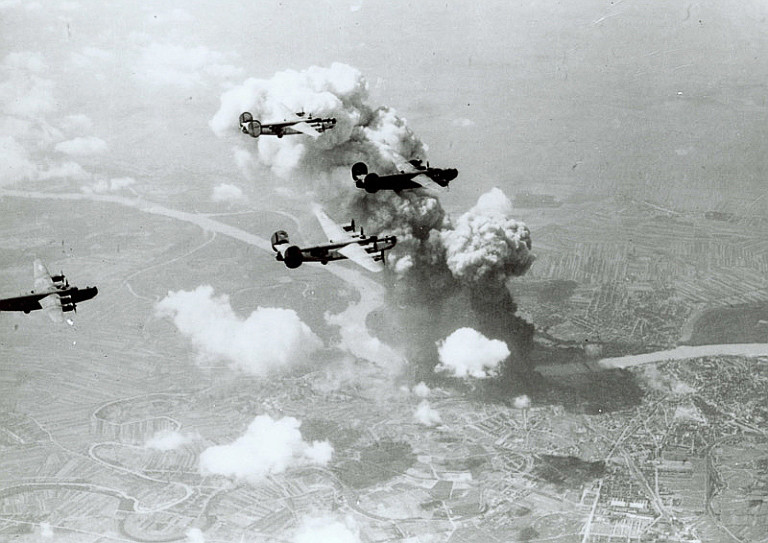
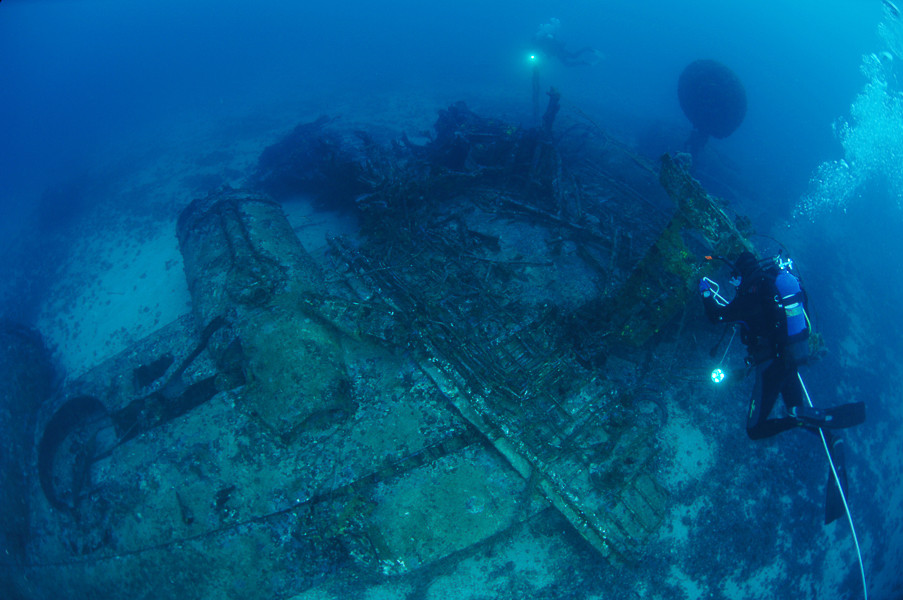
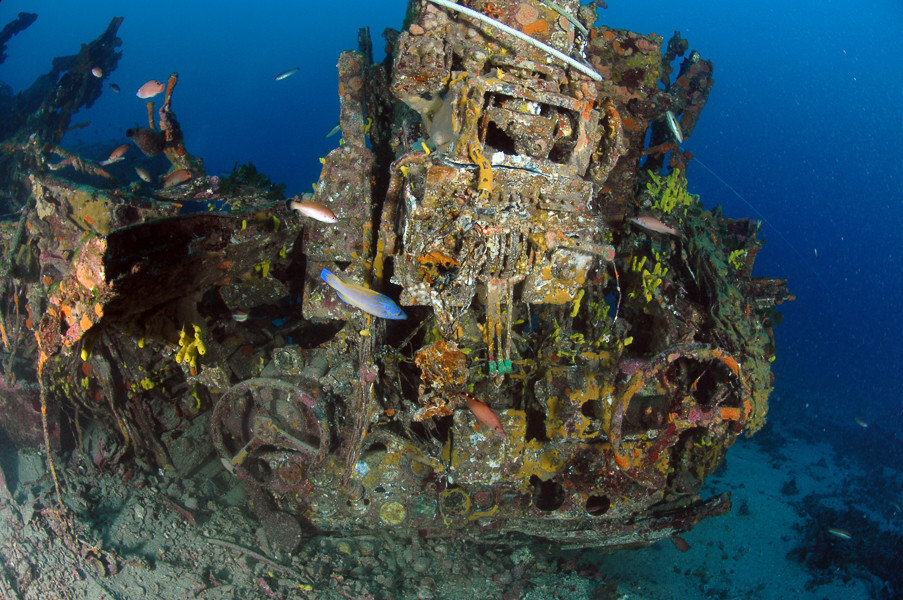
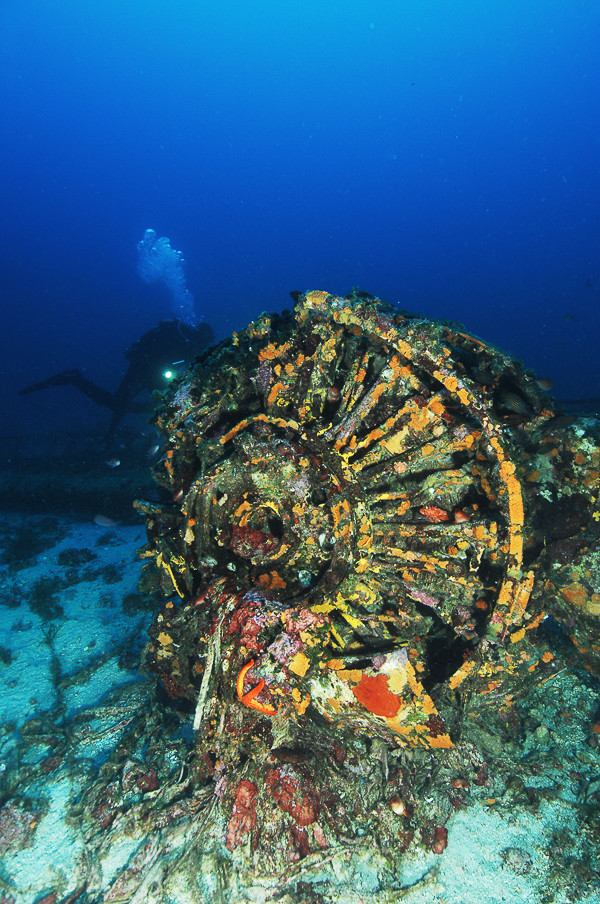


 The investment is co-financed by the Republic of Slovenia and the European Union from the European Regional Development Fund.
The investment is co-financed by the Republic of Slovenia and the European Union from the European Regional Development Fund.  H2O Globe BETA
H2O Globe BETA